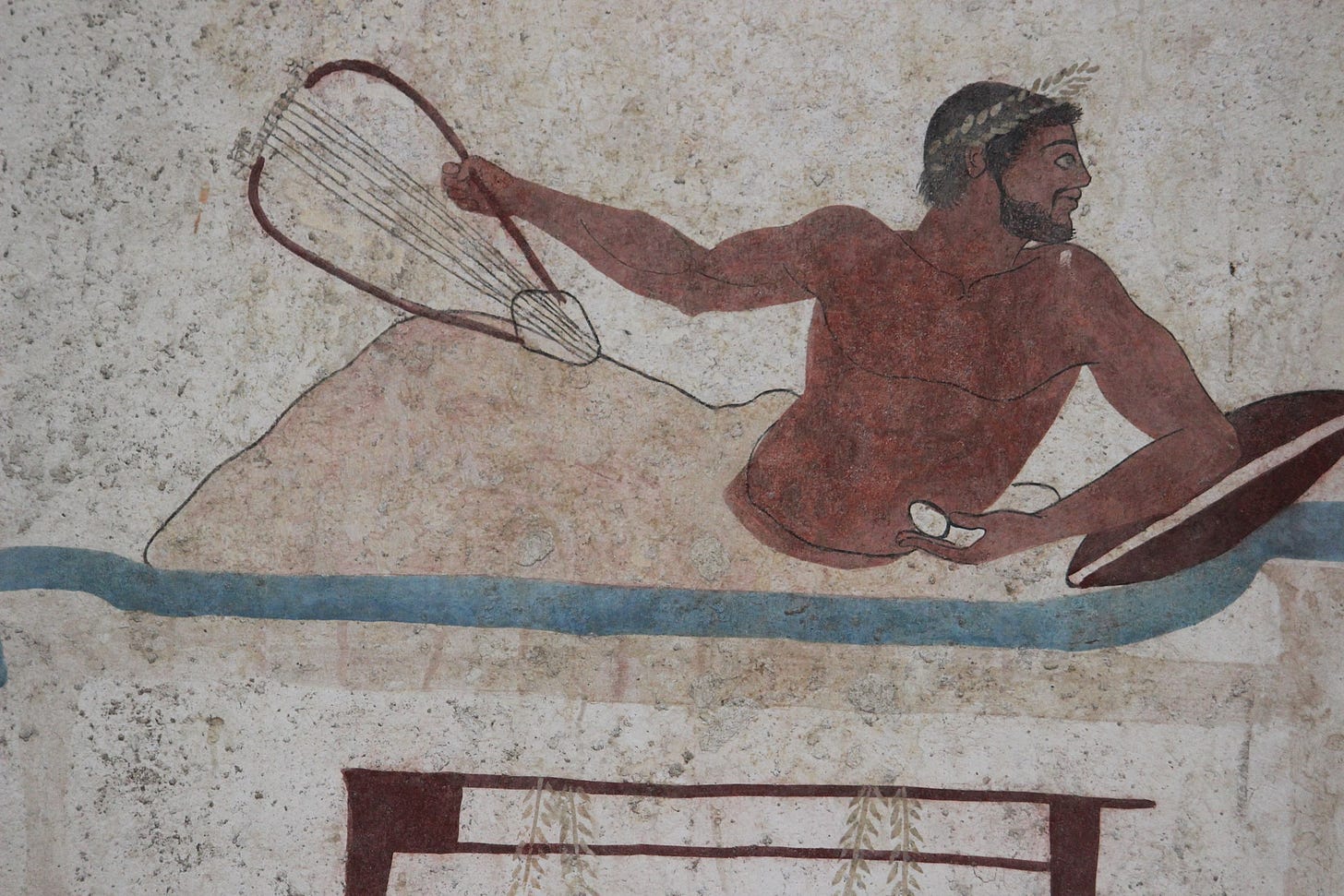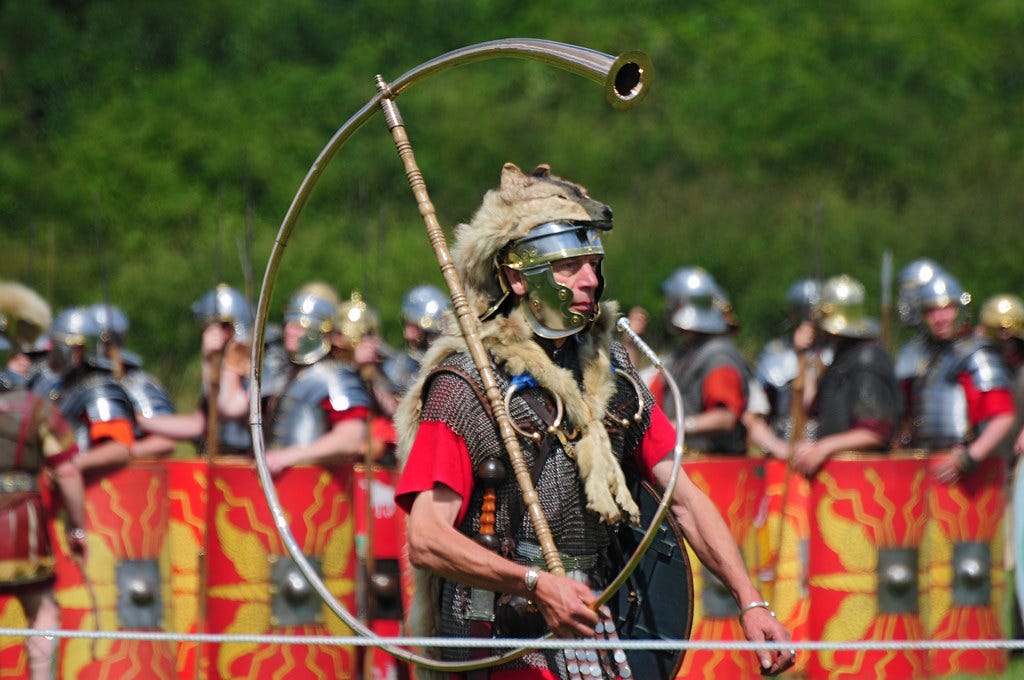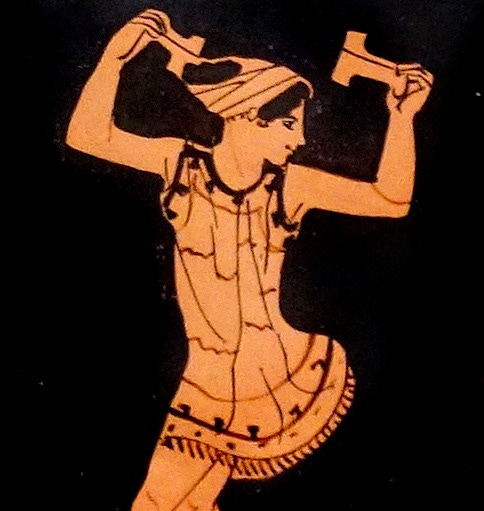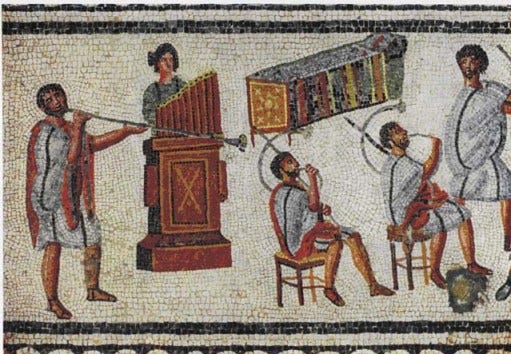5 Ancient Musical Instruments Lost to Time
Exploring the odd corners of the Ancient Orchestra
Music has come a long way since the time of the Greeks and the Romans, both in style and form. In particular, many of the instruments of the Classical world (not to be confused with classical music) have long become forgotten or obsolete. Today we’re going to look at some of the more interesting instruments of times gone by and what may have replaced them.
1. The Lyre
The lyre is synonymous with the music of the ancient world and therefore is likely the most well-known on this list. However, it had a few similar cousins which you may not have heard of. In it’s simplest form, the lyre was a stringed instrument, similar to a lute, where the strings are suspended between the arms of a u-shaped instrument and plucked to make different sounds. These were abundant in the ancient world in a number of shapes and sizes, and across a range of cultures, from Syria and Egypt to Italy and Greece. Eastern lyres tended to have a flat bottom, while Western ones were curved, though there were many different variations apart from this.
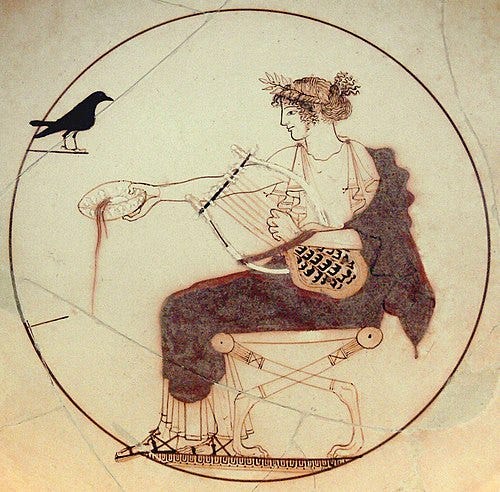
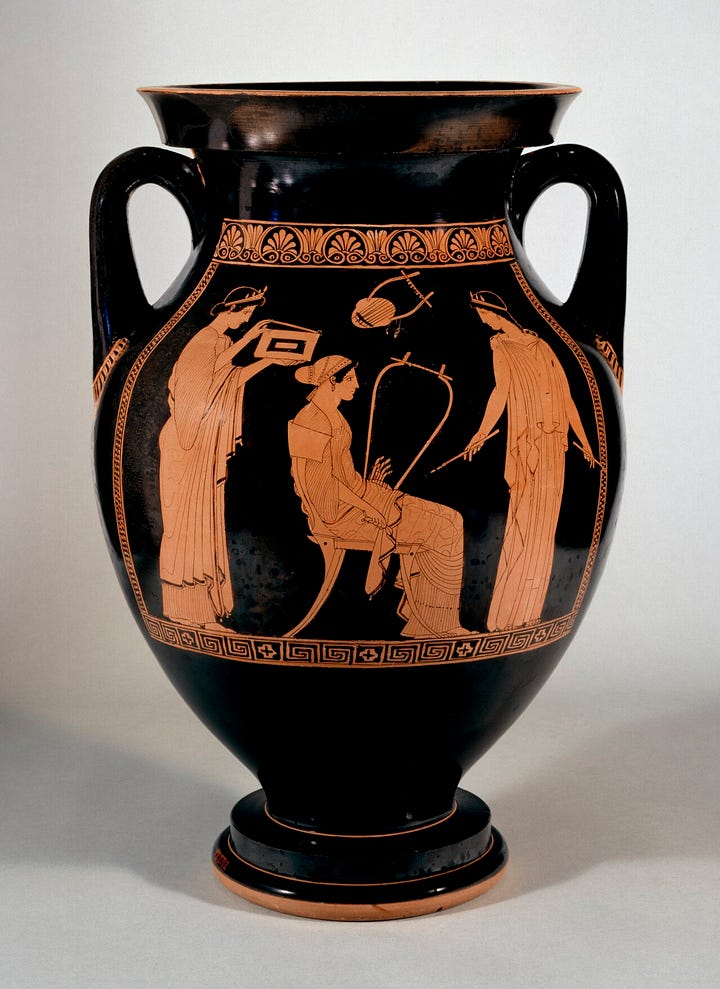
In Greece, the seven-string model used by ‘professional’ players was called a kithara and is the source of the modern word ‘guitar’. It required a great deal more skill than the basic lyre and skilled players would therefore be highly prized, providing entertainment across a range of social situations. A bass (low) version of the kithara also existed, though seen more rarely, known as a barbiton. In fact, it was so rarely seen that many ancient depictions of it are not particularly accurate, making it harder for us to recreate it!
The lyre was so central to ancient music that it appears in many forms of art. It’s likely that Homer himself recited his original epics to the accompaniment provided by a lyre. The Greeks created an entire origin myth for the instrument to explain its prevalence. In the Homeric Hymn to Hermes, the young god steals Apollo’s cattle but avoids the wrath of his half-brother when he creates a beautiful sounding instrument out of a tortoise shell and animal entrails as the strings! Apollo too is often depicted playing the kithara and is perhaps the creator of this more ‘refined’ version of the original.
2. The Aulos
A quick glance at the aulos might grant a hint as to why this instrument hasn’t stuck around. Not dissimilar to many other woodwind instruments, like the clarinet or oboe, the aulos stands out for the particularly humorous aspect it presents. Known sometimes as a double-flute, it is actually the two reeds that it possessed which gave it its unique sound. Each pipe had three or four holes which could be manipulated to change the pitch, just like a clarinet. The pipes themselves could be made of cane, wood or even metal.
As with the lyre, there were several variations of the aulos, including a single version much like a flute. The most interesting of these was the askaulos, whose name is a combination of aulos and askos (meaning ‘wine-skin’). This was in many respects similar to the bagpipes, as it had a sack which was filled with air to allow a continuous sound, while the reed was used to modulate the sound much like a chanter. It’s quite incredible to imagine a bagpipe-like sound in the setting of ancient Greece, but it did actually exist!
The aulos has one of the most interesting Greek myths associated with any instrument, being the tale of Marsyas. The story goes that Athena invented the aulos but when she saw a reflection of herself playing, she was embarrassed at how her inflated cheeks looked while playing it, and therefore tossed it away. It fell to earth and was found by a Satyr named Marsyas, who became incredibly adept at playing it. Unfortunately for Marsyas, he got a little too ‘rock star;’ about his fame and challenged Apollo to a competition - something that never ends well. While he was able to hold his own in the contest, eventually Apollo won when he was able to play his lyre upside down, but Marsyas couldn’t play the aulos thus inverted. And for such a stunning display of hubris, Apollo strung Marsyas up to a tree and flayed him alive…!

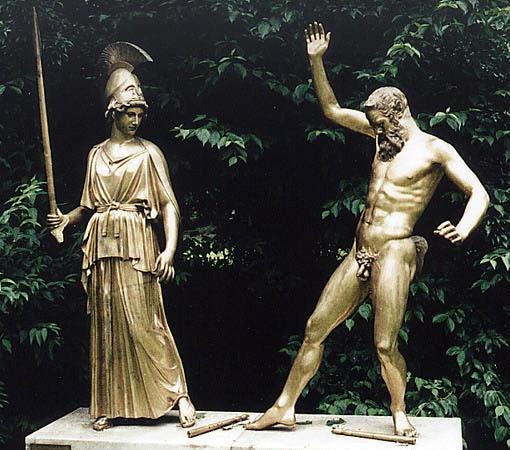
3. The Buccina
Now here is a cool looking instrument. If you’ve seen your fair share of Roman military films or documentaries, it’s likely that you’ve seen this funky, curly horn before. This is one of several brass instruments favoured by the Romans and is in fact very similar to its cousin the cornu. It was shaped like a letter G, with the narrow tube curling down from the mouthpiece, under the arms and up over the shoulders, ending with the bell above the wearer’s head, with a bar between the top and bottom to hold. It was designed for the ease of the wearer, so that it could rest comfortably even when not being played - which was important considering where it was used.
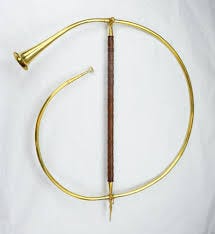
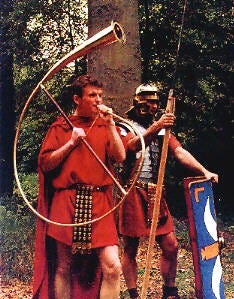
The primary function of these horns was military; as with many modern brass instruments in the military, it was used as a clear and straightforward way to send messages to a large army all at once. The volume and tone that the buccina and cornu could create was strong enough to carry across a camp or battlefield. Various calls were made with the horn, including signalling the various hours of the watch and giving specific orders in battle. There was even a specific officer in the army for playing these instruments, known as a cornicen.
The name buccina is possibly derived from the Latin bucca meaning ‘cheeks’, perhaps gaining the name for the same inflated look while playing it that Athena was embarrassed about earlier. The Romans were particularly fond of brass instruments, and several others were widely used such as the tuba - very different to its modern namesake, it was really a long straight tube - and the lituus, resembling a curved staff. Many of these would go on to evolve into the brass instruments we know today.
4. The Sistrum
At first look, this instrument might seem more like a torture instrument than a musical one. However, it is undeniable from a single glance that it would have made a hell of racket if you shook it - and that was exactly the point. A type of percussion instrument, the sistrum was essentially a rattle that could be shaken to provide a steady beat and rhythm to music. It was particularly popular in Ancient Egypt, where it was a sacred instrument that only women would play. They would be used in religious rituals and processions, to provide a steady beat and to aid in calling upon their various deities.
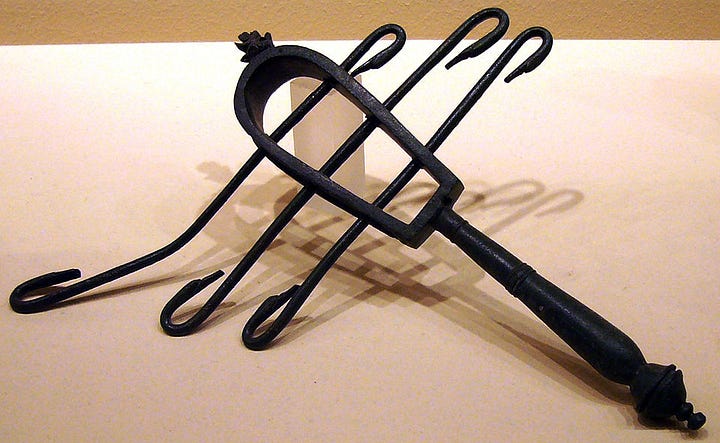
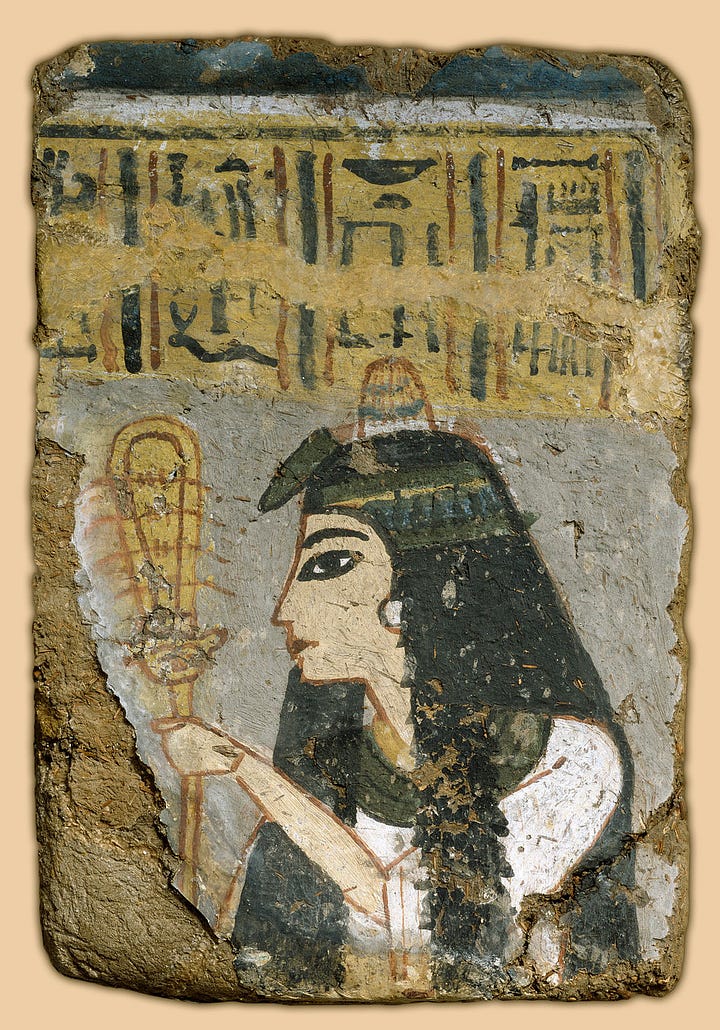
In a similar section of the ancient orchestra was the croatlum, which was a clapper similar to modern castanets. These were normally made of wood or shell, and designed to be held in one hand and snapped together to make a strong percussive sound. They were once more limited to female players, and would be used to add rhythm and depth to musical performances. These were likely the predecessors of the modern zill, finger cymbals used by belly dancers.
5. The Hydraulis (Water Organ)
The earliest know version of the water organ was the hydarulis created by Ctesibius of Alexandria in the 3rd Century BC, who had experimented for some time trying to create a wind-powered version before settling on water. His design pumped air into the device and used the balance between air and water to maintain a constant pressure within the instrument. As such, it could apparently play very loud sounds with only the lightest touch of the keys! Over time various other style were developed before it became easier to simply maintain a steady flow of air in modern organs.
That’s it from me today - I hoped you enjoyed this veritable orchestra of ancient instruments. Please drop a comment if you think I missed any or if you’d like to see similar articles on other topics.


